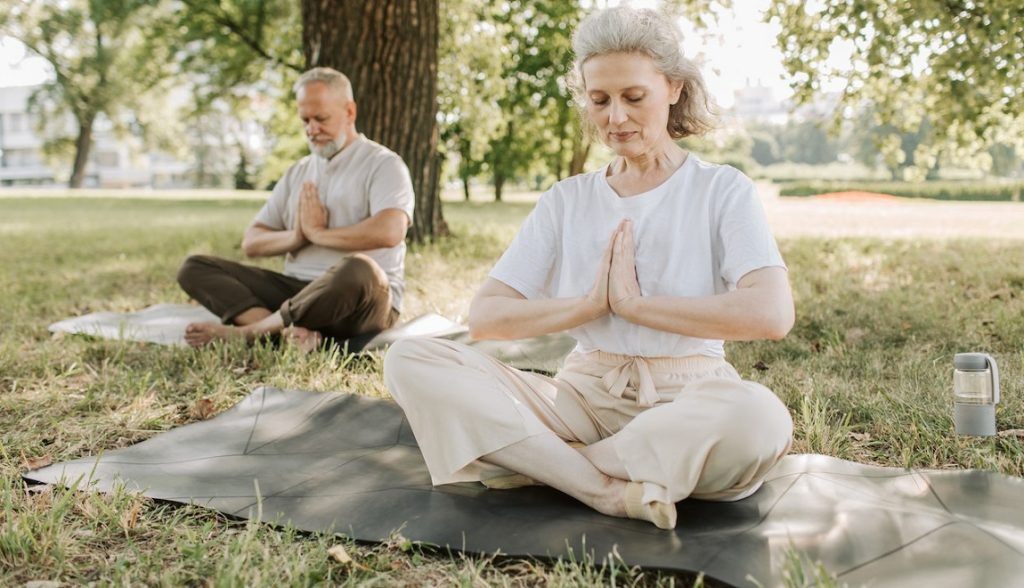As the world’s population continues to age, promoting mobility and Exercise for Seniors has become an increasingly important area of focus. Older adults often face challenges in maintaining their physical health and mobility, which can lead to a range of negative health outcomes. However, by promoting exercise and mobility in elder care, we can help older adults to maintain their independence, improve their quality of life, and reduce their risk of health complications.

Table of Contents
The Benefits of Exercise for Older Adults
Exercise offers a range of benefits for individuals of all ages, and this is particularly true for older adults. Regular exercise can help to improve physical health, mental health, and overall well-being.
Improved Physical Health
One of the primary benefits of exercise for older adults is improved physical health. Exercise can help to improve cardiovascular health, increase muscle mass and bone density, and enhance overall physical functioning. By engaging in regular exercise, older adults can reduce their risk of developing chronic health conditions such as heart disease, diabetes, and osteoporosis.
Improved Mental Health
Exercise is also beneficial for mental health, particularly in older adults. Regular exercise has been shown to reduce the risk of depression and anxiety and improve cognitive function. Additionally, exercise can provide a sense of purpose and accomplishment, which can be particularly important for older adults who may be facing challenges such as social isolation or loss of independence.
Reduced Risk of Falls and Injuries
Finally, regular exercise can help to reduce the risk of falls and injuries in older adults. Falls are a major health concern for older adults, and they can lead to serious injuries and complications. By engaging in exercises that improve balance and strength, older adults can reduce their risk of falls and maintain their independence for longer.
The Importance of Promoting Mobility in Elder Care
In addition to exercise, promoting mobility is also an important aspect of elder care. Mobility refers to an individual’s ability to move freely and independently, and it is essential for maintaining independence and overall health and well-being.
Mobility and Independence
Maintaining mobility is essential for older adults to maintain their independence. The ability to move around freely and independently is necessary for performing activities of daily living such as bathing, dressing, and cooking. By promoting mobility, we can help older adults to maintain their independence and reduce their reliance on caregivers or family members.
Mobility and Socialization
Mobility is also essential for socialization and community engagement. Older adults who are mobile are more likely to participate in community activities and events, which can help to reduce social isolation and improve mental health. By promoting mobility in elder care, we can help older adults to maintain social connections and stay engaged with their communities.
Mobility and Mental Health
Mobility is also important for mental health. Research has shown that older adults who experience mobility limitations are more likely to experience depression and anxiety. By promoting mobility and encouraging regular exercise, we can help to improve mental health outcomes in older adults.
Strategies for Promoting Mobility and Exercise for Seniors
There are several strategies that can be employed to promote mobility and Exercise for Seniors. These strategies include:
Strength Training
Strength training is a type of exercise that involves using weights or resistance to build muscle and increase overall strength. This type of exercise is particularly beneficial for older adults, as it can help to prevent muscle loss and increase bone density. Strength training exercises can include exercises such as lifting weights or using resistance bands.
Cardiovascular Exercise
Cardiovascular exercise is any type of exercise that increases heart rate and breathing rate. This type of exercise is important for improving cardiovascular health and increasing overall endurance. Examples of cardiovascular exercise include walking, cycling, or swimming.
Balance and Flexibility Training
Balance and flexibility training is also important for older adults. These types of exercises can help to improve balance and coordination, which can reduce the risk of falls and injuries. Examples of balance and flexibility exercises include yoga or tai chi.
Adaptive Equipment and Technology
Adaptive equipment and technology can also be used to promote mobility and Exercise for Seniors. This can include equipment such as mobility aids or assistive devices that can help older adults to move around more easily. Additionally, technology such as fitness trackers or online exercise classes can help to motivate older adults to engage in regular exercise.
Challenges and Barriers to Promoting Mobility and Exercise for Seniors
While there are many benefits to promoting mobility and Exercise for Seniors, there are also several challenges and barriers that must be addressed. These challenges can include:
Physical Limitations and Health Conditions
Older adults may face physical limitations or health conditions that make it difficult to engage in regular exercise. For example, individuals with arthritis may experience pain and stiffness that makes exercise difficult. It is important to develop personalized care plans that take into account an individual’s unique health conditions and physical limitations.
Attitudes and Beliefs About Aging and Exercise
Attitudes and beliefs about aging and exercise can also be a barrier to promoting mobility and Exercise for Seniors. Some older adults may believe that exercise is unnecessary or unsafe, while others may have negative associations with exercise. Education and awareness can help to address these attitudes and beliefs and encourage older adults to engage in regular exercise.
Access to Resources and Support
Finally, access to resources and support can be a challenge when promoting mobility and Exercise for Seniors. Some older adults may not have access to transportation to attend exercise classes or may not have the financial resources to purchase adaptive equipment. It is important to ensure that resources and support are available and accessible to all older adults.
Overcoming Challenges
To overcome the challenges and barriers to promoting mobility and Exercise for Seniors, there are several strategies that can be employed. These include:
Personalized Care Plans
Developing personalized care plans that take into account an individual’s unique physical limitations and health conditions is essential for promoting mobility and Exercise for Seniors. These care plans should be developed in collaboration with the older adult and their healthcare provider and should include tailored exercise recommendations and adaptations to address any physical limitations.
Education and Awareness
Education and awareness campaigns can help to address negative attitudes and beliefs about aging and exercise. By providing older adults with accurate information about the benefits of exercise and addressing common misconceptions, we can encourage older adults to engage in regular exercise and promote mobility.
Access to Resources and Support
Ensuring access to resources and support is also essential for promoting mobility and Exercise for Seniors. This can include providing transportation to exercise classes or ensuring that adaptive equipment is available and affordable. Additionally, healthcare providers and caregivers can provide support and encouragement to older adults to help them stay motivated and engaged in regular exercise.
Conclusion
Promoting mobility and Exercise for Seniors is essential for enhancing health and well-being in older adults. By promoting mobility, we can help older adults to maintain their independence and reduce their reliance on caregivers or family members. Additionally, regular exercise can improve cardiovascular health, prevent muscle loss, and improve mental health outcomes. While there are challenges and barriers to promoting mobility and Exercise for Seniors, personalized care plans, education and awareness, and access to resources and support can help to overcome these challenges and promote healthy aging.
FAQ
What types of exercises are best for older adults?
Strength training, cardiovascular exercise, balance, and flexibility training are all important for older adults. It is important to develop personalized exercise recommendations that take into account an individual’s unique physical limitations and health conditions.
Can exercise help prevent falls in older adults?
Yes, balance and flexibility exercises can help to improve balance and coordination, which can reduce the risk of falls and injuries.
How can caregivers and healthcare providers support older adults in staying active?
Caregivers and healthcare providers can provide support and encouragement to older adults, ensure access to resources and support, and help to develop personalized exercise recommendations.
Are there any risks associated with exercise in older adults?
While exercise is generally safe for older adults, it is important to take into account an individual’s unique physical limitations and health conditions. Healthcare providers can help to develop personalized exercise recommendations that are safe and effective for each individual.
How can technology be used to promote mobility and Exercise for Seniors?
Technology such as fitness trackers or online exercise classes can help to motivate older adults to engage in regular exercise. Additionally, adaptive equipment such as mobility aids can also help older adults to move around more easily.

Leave a Reply